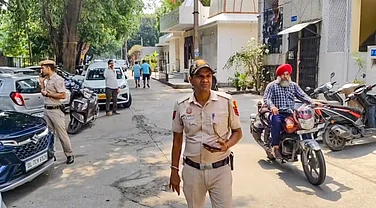Eight Chief Ministers in twenty years – Uttarakhand has seen political instability since 2000 when the hill state was carved out of Uttar Pradesh.
On March 9, Trivendra Singh Rawat resigned – He is the ninth Chief Minister and the sixth from the BJP. With just a year to go for Assembly elections, the new incumbent in the post will have his task cut out.
So far, only Congress veteran N D Tiwari has completed his full five-year term.
What happened in 2000?
On November 9, 2000, Uttarakhand became a separate state and BJP leader Nityanand Swami was sworn in to head the interim government. However, the party asked him to resign to make way for his cabinet colleague Bhagat Singh Koshyari. He is now the Governor of Maharashtra and Goa.
How are votes divided in Uttarakhand?
Votes are divided along three lines – Kumaoni and Garhwali, hill and plains, and Thakur and Brahmin.
The leaders were under pressure to make the changes.
It didn’t help BJP
Changing the Chief Minister was of no use to the BJP in the Assembly elections of 2002. N D Tiwari, Congress leader who had been Chief Minister of undivided Uttar Pradesh thrice, was sworn in to lead the government in Dehradun.
Tiwari served his full five-year term until 2007, but faced challenges from various factions within the party organisation throughout his tenure.
BJP returned
In 2007, the BJP came back to power and Maj Gen B C Khanduri (retd), who had been Minister in Prime Minister Atal Bihari Vajpayee’s Cabinet, was sworn in as Chief Minister. However, he couldn’t survive in the chair for more than two years – In June 2009, the party replaced him with Ramesh Pokhriyal ‘Nishank’, who is now India’s Minister for Education.
But Nishank too, lasted just two years — he was asked to resign in September 2011, and Gen Khanduri returned as Chief Minister only five months before Assembly elections.
Once again Congress
Appointing Khanduri was of no help to the BJP, however, it did not help it buck anti-incumbency in the Assembly elections.
The BJP won 31 seats while Congress won 32, and formed the government with support from the BSP and Independents. Khanduri himself lost the election from Kotdwar; Nishank, however, won the Doiwala seat in Dehradun.
Congress leader Vijay Bahuguna — who is now in the BJP — became Chief Minister in March 2012, but did not last long in the post. At the end of January 2014, he resigned, in the aftermath of the devastating Kedarnath floods of 2013.
On February 1, 2014, Harish Rawat took oath as Chief Minister. In March 2016, nine Congress MLAs including Vijay Bahuguna rebelled against Rawat’s leadership and his government was dislodged.
While Harish Rawat did manage to return to power after winning the floor test later that summer, the damage was done. In the Assembly elections of 2017, the Congress fell to 11 seats, and the BJP rode the Narendra Modi wave to power, winning 57 seats in the Assembly.
Four years of Trivendra Rawat
After the grand victory, the BJP announced Trivendra Singh Rawat as Chief Minister. However, a few days before he was to complete four years in power on March 18, he resigned.
















